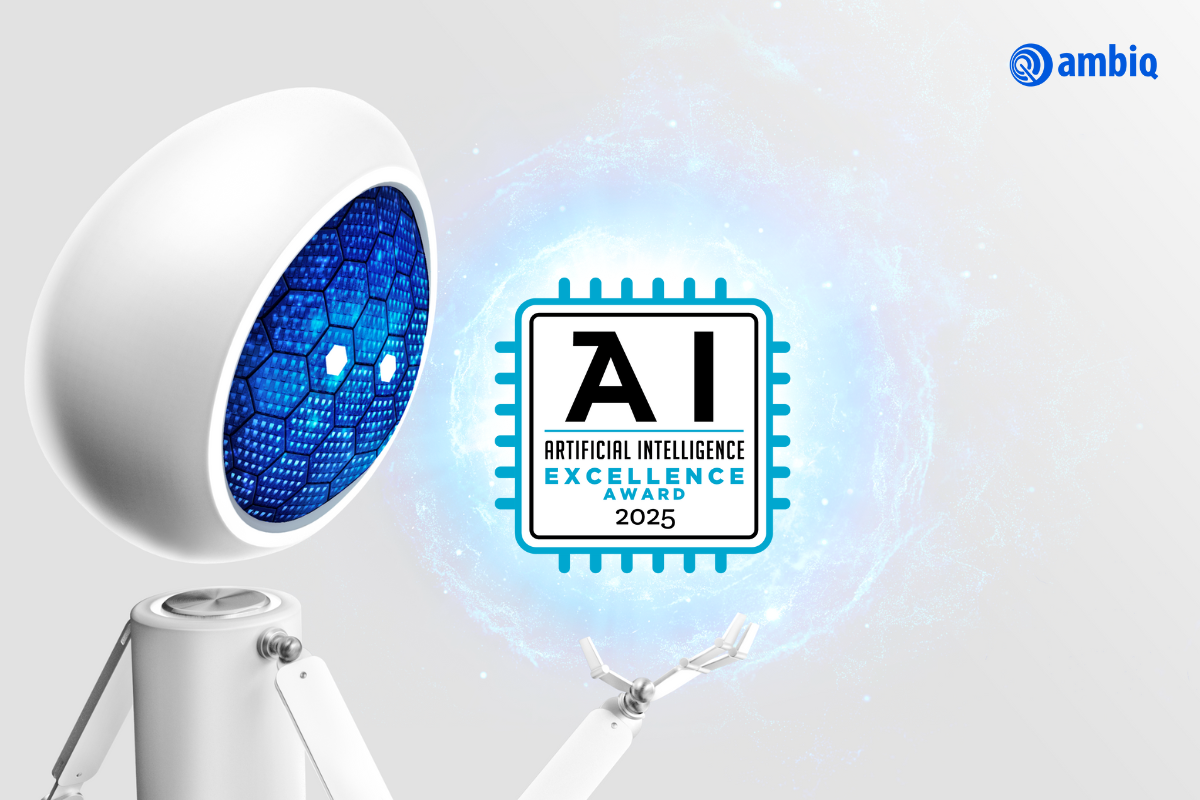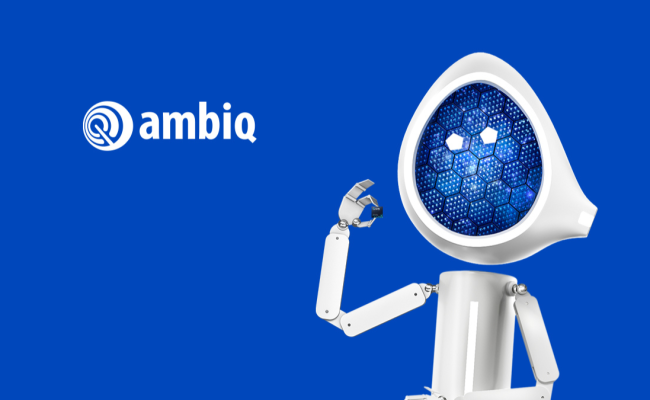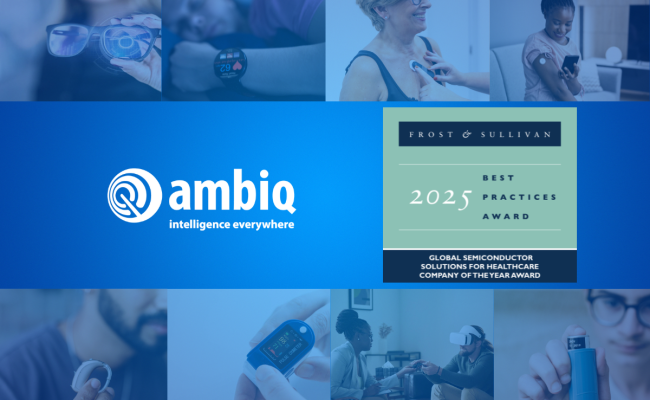
AUSTIN, TX, March 26, 2025 – Ambiq®, a technology leader in ultra-low-power semiconductor solutions for edge AI, is proud to announce that it has been named a winner in the 2025 Artificial Intelligence Excellence Awards, presented by the Business Intelligence Group. This prestigious recognition highlights Ambiq’s commitment to innovation and its contributions to advancing artificial intelligence at the edge.
Ambiq’s mission is to enable intelligence (artificial intelligence (AI) and beyond) everywhere by delivering the lowest power semiconductor solutions. Since 2010, Ambiq’s patented sub-threshold power optimized technology (SPOT®) platform has helped produce two to five times lower power consumption than traditional semiconductor designs. An estimated 40% of the 42 million units shipped with Ambiq chips are running local neural networks for always-on, real-time AI inferencing.
“We are not just witnessing the shift of artificial intelligence from the cloud to the edge—we are driving it,” said Fumihide Esaka, CEO of Ambiq. “This award by the Business Intelligence Group is a testament to our team’s dedication and unwavering mission to push the boundaries of AI, delivering innovative solutions that enhance lives and transform industries.”
The Artificial Intelligence Excellence Awards celebrate the most innovative companies, technologies, and professionals who are leading the way in AI innovation. Winners are selected by a panel of industry experts who evaluate nominees based on their creativity, impact, and measurable success in AI-driven solutions.
“The AI industry is evolving rapidly, and it is through the efforts of companies like Ambiq that we see real-world applications driving change,” said Russ Fordyce, CEO of the Business Intelligence Group. “Their work exemplifies the kind of innovation and leadership that is shaping the future of AI and this makes me very excited for what’s to come.”
For more information about how Ambiq enables AI, visit Ambiq’s technology page.
Ambiq
Our mission is to enable intelligence (artificial intelligence (AI) and beyond) everywhere by delivering the lowest power semiconductor solutions. We enable our customers to deliver artificial intelligence compute at the edge where power consumption challenges are the most profound. Our technology innovations, built on the patented and proprietary sub-threshold power optimized technology (SPOT), fundamentally deliver a multi-fold improvement in power consumption over traditional semiconductor designs. We’ve powered over 260 million devices today. For more information, visit www.ambiq.com.
About Business Intelligence Group
The Business Intelligence Group was founded with the mission of recognizing true talent and superior performance in the business world. Unlike other industry award programs, these programs are judged by business executives having experience and knowledge. The organization’s proprietary and unique scoring system selectively measures performance across multiple business domains and rewards those companies whose achievements stand above those of their peers.
Contact
Charlene Wan
VP of Branding, Marketing, and Investor Relations
+1.512.879.2850
Read Article in: Japanese | Simplified Chinese | Traditional Chinese


